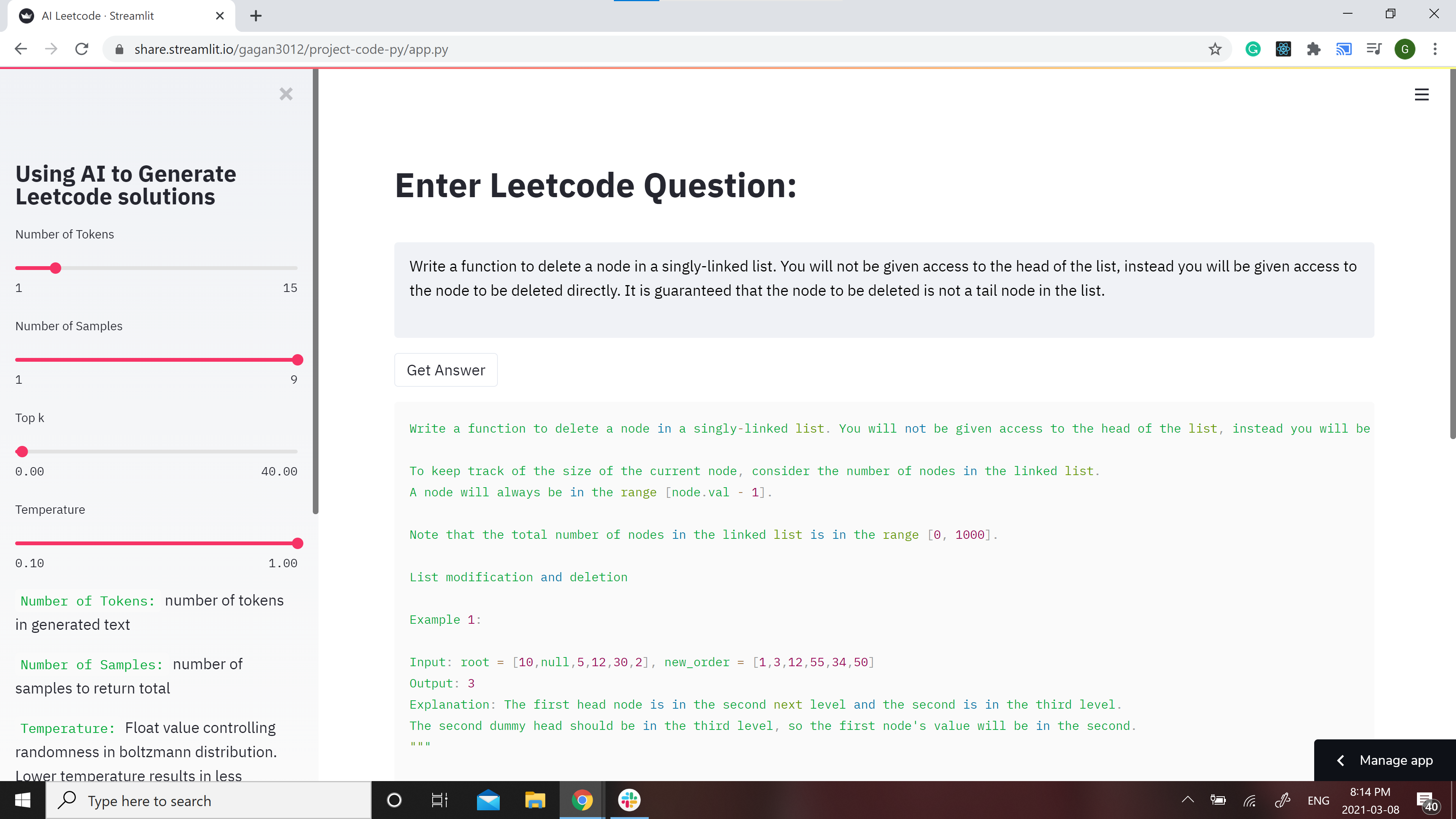Leetcode using AI
🤖
GPT-2 Model for Leetcode Questions in python New demo here: https://huggingface.co/spaces/gagan3012/project-code-py
Note: the Answers might not make sense in some cases because of the bias in GPT-2 Current accuracy is capped at 90%.
Contribtuions: If you would like to make the model/UI better contributions (Issues/PRs) are welcome Check out CONTRIBUTIONS
How I built this : Linkedin
📢
Favour:
It would be highly motivating, if you can STAR
Model
Two models have been developed for different use cases and they can be found at https://huggingface.co/gagan3012
The model weights can be found here: GPT-2 and DistilGPT-2
The model has been trained using Weights and Biases (Wandb) and PyTorch
GPT Neo model: https://huggingface.co/gagan3012/project-code-py-neo
Example usage:
from transformers import AutoTokenizer, AutoModelWithLMHead
tokenizer = AutoTokenizer.from_pretrained("gagan3012/project-code-py")
model = AutoModelWithLMHead.from_pretrained("gagan3012/project-code-py")
Demo
A streamlit webapp has been setup to use the model: https://share.streamlit.io/gagan3012/project-code-py/app.py
Please create an issue in this repo if the demo is not working
Example results:
Question:
Write a function to delete a node in a singly-linked list. You will not be given access to the head of the list, instead you will be given access to the node to be deleted directly. It is guaranteed that the node to be deleted is not a tail node in the list.
Answer:
""" Write a function to delete a node in a singly-linked list. You will not be given access to the head of the list, instead you will be given access to the node to be deleted directly. It is guaranteed that the node to be deleted is not a tail node in the list.
For example,
a = 1->2->3
b = 3->1->2
t = ListNode(-1, 1)
Note: The lexicographic ordering of the nodes in a tree matters. Do not assign values to nodes in a tree.
Example 1:
Input: [1,2,3]
Output: 1->2->5
Explanation: 1->2->3->3->4, then 1->2->5[2] and then 5->1->3->4.
Note:
The length of a linked list will be in the range [1, 1000].
Node.val must be a valid LinkedListNode type.
Both the length and the value of the nodes in a linked list will be in the range [-1000, 1000].
All nodes are distinct.
"""
# Definition for singly-linked list.
# class ListNode:
# def __init__(self, x):
# self.val = x
# self.next = None
class Solution:
def deleteNode(self, head: ListNode, val: int) -> None:
"""
BFS
Linked List
:param head: ListNode
:param val: int
:return: ListNode
"""
if head is not None:
return head
dummy = ListNode(-1, 1)
dummy.next = head
dummy.next.val = val
dummy.next.next = head
dummy.val = ""
s1 = Solution()
print(s1.deleteNode(head))
print(s1.deleteNode(-1))
print(s1.deleteNode(-1))

